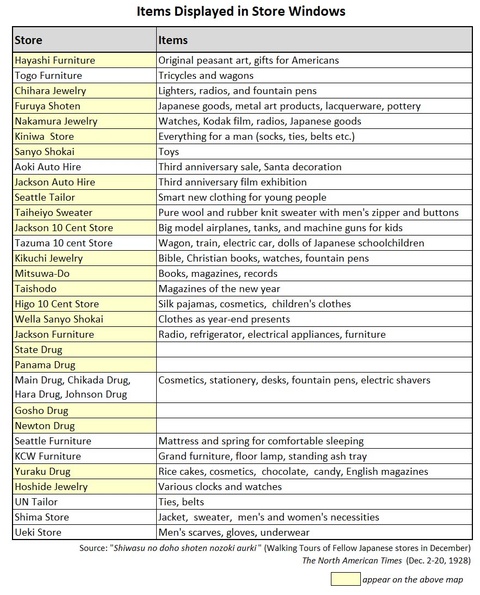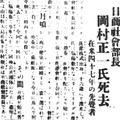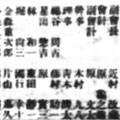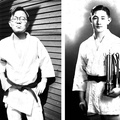In chapter 2, I introduced Manjiro Morita and Masajiro Furuya, who moved to Seattle around 1890 and were referred to as the “founding” Japanese. This chapter explores articles about Seattle’s rapid growth in and after 1917 and the flourishing of Japantown.
Rapid Growth of Seattle
Since World War I, the rapid growth of the military and the shipbuilding industries had turned Seattle into a significantly busy trading port, especially in the years after 1917. Its trade value (exports and imports) was the ninth in the states for four consecutive years from 1912 to 1916, but jumped to second place, just behind New York in 1918, leading the Pacific Coast ahead of San Francisco.
The June 16, 1919 issue of The North American Times reports that Seattle’s annual trade value of $110 million in 1914 rose to a record-breaking $585 million by June 1919. While this number only reflects the amount of foreign trade, it would have reached $1.12 billion, if combined with trade values from other areas on the Pacific Coast such as Hawaii, Alaska, Oregon, and California.
The newspaper lists the following reasons as to why Seattle became a more prosperous port than San Francisco in its July 19, 1918 issue:
(1) It had a great port committee. (2) With its excellent port facilities, Seattle seized its big chance during the war when the Mediterranean and the Suez Canal were closed down. (3) Seattle owned a dock and a great wharf, had an organized warehouse, imposed a wharf fee, and was remodeled by the port authorities.
I believe that the Seattle route connecting to the transcontinental railroad was another factor, as it became the shortest route to connect Asia, America, and Europe.
A photo of Seattle from this time shows a number of high-rise buildings standing side by side. The population of the city of Seattle reached 315,000 in 1920.
Increase in Japanese Population
Japanese people from many parts of America moved to the flourishing city of Seattle. According to the Foreign Ministry’s report “The Statistics on Japanese Nationals Residing Overseas” which was published in the April 25, 1918 issue, the Japanese population of Seattle then was 5,520; 3,977 of whom were male and 1,543 were female.
There are articles reporting the increase in the Japanese population in the four issues published on July 8, September 3, September 21, and October 4 of 1918. These can be summarized as follows:
- Japanese workers from other states are continually making their way to Seattle. The 1918 population of Seattle is about 7,000, including people residing in surrounding areas, and it could easily reach 8,000 if counting those returning from salmon-canning work in Alaska. There has been a significant increase in the number of married men as well. The population is increasing at the rate of 2 persons a day.
- While California has farm work available in summer only, Seattle offers job opportunities year-round. The standard pay in California is $3 a day, while it’s $4 in Seattle (about 8 yen in Japanese currency or 8,000 yen in current value.)
- As it offers the highest pay in the nation, Seattle has an increasing number of workers in Western-style restaurants, hotels, agriculture, and lumber mills. We also see more female workers as well as people working with their family members in the same profession.
- When comparing New York to Seattle, we see that New York has few high-paying jobs, with the exception of those in some shipyards and munitions factories. In Seattle, however, people can get paid well for relatively easy jobs. Moreover, a meal costs 50-75 cents in New York but 25-50 cents in Seattle. Further, New York has a tipping system where people even tip at barbershops and for shoeshines. The cost of living in New York is similarly high and staying at hotels or renting rooms is expensive. Seattle residents are blessed.
Flourishing of Japanese Businesses
The city of Seattle attracted a series of Japanese enterprises such as trading companies and banks. In 1907, as the first bank owned by a Japanese, Nihon Shogyo Bank, was founded by Masajiro Furuya, whom I introduced in chapter 2. Yokohama Specie Bank opened its branch in Seattle in 1917 and Sumitomo Bank followed a year later.
The newspaper reports the amounts deposited by Japanese people in Seattle in its November 19, 1918 and March 24, 1919 issues. The total deposits in the three banks in 1919 was $3.92 million. This was approximately 7.84 million yen in Japanese currency then and about 8 billion at the current rate. If we estimate the percentage of the working population (excluding children) to be 60% of 5520 Japanese people in Seattle at that time, then the amount deposited per worker was about 2.5 million yen at the current rate. Many Japanese either saved their earnings or sent them back home to Japan while they themselves led simple lives.

With the increase in the Japanese population, many Japanese businesses kept growing. I found articles reporting on the growth of Japanese businesses in the May 8, July 31, and December 29, 1919 issues.
We can see the wide range of Japanese businesses reported in the paper as follows: US-Japan trade, banking, shipbuilding, retail stores, agriculture, maritime transport, hotels, Western-style restaurants, laundries, groceries (of Japanese food products and miscellaneous goods), barbershops, cleaners, motion-picture theaters, apartment management, auto mechanic shops, clothing and shoe stores, fruit stands, soft drinks, poolrooms, etc.
The reporting includes some notes: “Japanese retail stores on Jackson Street are as successful as their counterparts in white-dominated areas” and “the praise goes to the diligence of Japanese people,” showing how Seattle society held them in high regard.
Centering on Main Street, which runs east- west in south-central Seattle, the Japanese lived close together in narrow areas along Washington, Jackson, King, Weller and Lane Streets, etc., as they gradually formed Japantown.
The Japanese community in Seattle continued to grow until around 1935, when the Japanese population of the city reached 7500, or 15,600 if combined with those of surrounding areas, according to U.S. Census data from Consulate General of Japan in Seattle.
Prosperous Japantown
The Sino-Japanese war intensified the tension between Japan and the U.S. from 1937, further heightening the anti-Japanese movement in the Seattle area which began getting hostile with the increase in the Japanese population. People were participating in a boycott of Japanese goods as well. In such a turbulent time, the paper published a series of articles from December 1- 20, 1938, titled “Shiwasu no doho shoten nozoki aruki” (Walking Tours of Fellow Japanese Stores in December). Apparently, it was intended to promote Nikkei businesses by featuring individual Japanese retail stores. Each store came up with its own ideas to set the mood for Japantown, decorating its store windows. The descriptions in the articles show a bustling Japantown. Each of the featured stores was so stylish that I wanted to stop by.

There is another series of articles featuring Japanese retail stores titled “Your Year-End Shopping Guide,” which ran daily from December 2-26, 1939. The first article of the series introduces three stores: Nakamura Clock Shokai, Main Pharmacy, and State Pharmacy. Assuming that they each specialized in clocks or medicine, I was surprised by the items they had on sale. Nakamura Clock Shokai had dancing dolls in a glass case, a set of cut-glass whisky glasses, and Japanese-style picture frames. Main Pharmacy had fountain pens and harmonicas and State Pharmacy had cigarette lighters and cameras for children.

“It has become a habit of mine to thoroughly look over the ads of each store in the paper and get an idea of what I want to buy before I go out shopping. So, this year, too, I have decided to look for items in the ads,” commented a North American Times reporter, adding a playful mood to the article.
Still, next to such an entertaining article about Japantown, we see a report on the worsening U.S.-Japan relationship. The July 29, 1939 issue reports that the U.S. government unilaterally sent a notification of termination of the Treaty of Amity and Commerce (U.S.-Japan) on July 26, stating that it is to become void on January 26, 1940. The article notes that this will have a great impact on Japanese in the U.S. People in Japantown must have been deeply concerned. In the December 12 issue, the big headline “Fellow Japanese, Keep Your Head Down” runs above the “Your Year-End Shopping Guide” article with the Japanese Association (Nihonjin-kai) alerting readers to devotedly protect their workplaces because the treaty is being terminated. Under such serious circumstances, Japanese retail stores strove to stay positive and survive in Seattle.
In chapter 4, I would like to introduce articles about the lives of some notable Japanese in Seattle in and after 1918.
References
Kojiro Takeuchi, History of Japanese Immigrants in the Northwestern United States, Taihoku Nippo-sha, 1929.
Kazuo Ito, Hokubei Hyakunen Zakura (100-Year Cherry Blossoms in North America), Nichibou Shuppan, 1969.
Hokubei Nenkan (North American Annual), Hokubei Jijisha, 1928, 1936.
*The English version of this series is a collaboration between Discover Nikkei and The North American Post, Seattle’s bilingual community newspaper.
© 2021 Ikuo Shinmasu / The North American Post









